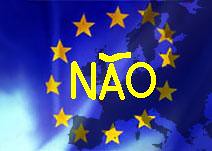Europe on its way to the Moon, as step to international lunar base
"The International Lunar Exploration Working Group ILEWG is welcoming the U.S. plan for a possible return to the Moon next decade. This can challenge space agencies interested by the Moon and trigger opportunities for ongoing activities and collaborations", says ILEWG director Bernard Foing.
Europe is presently on its way to the Moon, with ESA's SMART-1 technology mission, launched on 27 September 2003. " The SMART-1 spacecraft has finally achieved the first part of its mission to escape the Earth radiation belts, thanks to its novel ion propulsion technique" says G. Racca , ESA's SMART-1 Project manager.
" SMART-1 will provide opportunities for scientific research, resources mapping, and studying potential sites for future landings and lunar bases", says Bernard Foing.
ILEWG has identified a "roadmap for lunar exploration", with a progressive approach, starting with precursor missions such as ESA's SMART-1. Japanese, Chinese and Indian space agencies are preparing to launch lunar probes from 2004 to 2008.
For ILEWG, phase 2 will be to deploy a series of lunar landers, to perform new investigations, to return new samples that could tell us about the history of our own Earth, and to test exploration technologies for future
lunar and planetary missions. These autonomous robotic landers will be controlled from Earth with telepresence and virtual reality, and will be smarter.
For phase 3, ILEWG envisages around 2015 an international robotic village, with advanced landers and rovers from various space agencies, sharing some facilities for exploiting local resources, producing energy, conducting experiments on life support, and deploying infrastructures to prepare for
human crew missions growing gradually.
ILEWG sees phase 4 around 2020 with a permanently inhabited lunar base, to conduct research, to exploit lunar resources, to learn to live off the lunar land, and to test technologies for voyages to Mars.
The European Space agency is defining an exploration programme, called Aurora, in order to develop the technology and implement a series of missions to the Moon and Mars, that can be realised in cooperation with other partners.
"An international lunar base before 2020 is possible", says B.H. Foing, "this will depend on the demand of the public and commitment of political actors from space-faring nations".
Europe is presently on its way to the Moon, with ESA's SMART-1 technology mission, launched on 27 September 2003. " The SMART-1 spacecraft has finally achieved the first part of its mission to escape the Earth radiation belts, thanks to its novel ion propulsion technique" says G. Racca , ESA's SMART-1 Project manager.
" SMART-1 will provide opportunities for scientific research, resources mapping, and studying potential sites for future landings and lunar bases", says Bernard Foing.
ILEWG has identified a "roadmap for lunar exploration", with a progressive approach, starting with precursor missions such as ESA's SMART-1. Japanese, Chinese and Indian space agencies are preparing to launch lunar probes from 2004 to 2008.
For ILEWG, phase 2 will be to deploy a series of lunar landers, to perform new investigations, to return new samples that could tell us about the history of our own Earth, and to test exploration technologies for future
lunar and planetary missions. These autonomous robotic landers will be controlled from Earth with telepresence and virtual reality, and will be smarter.
For phase 3, ILEWG envisages around 2015 an international robotic village, with advanced landers and rovers from various space agencies, sharing some facilities for exploiting local resources, producing energy, conducting experiments on life support, and deploying infrastructures to prepare for
human crew missions growing gradually.
ILEWG sees phase 4 around 2020 with a permanently inhabited lunar base, to conduct research, to exploit lunar resources, to learn to live off the lunar land, and to test technologies for voyages to Mars.
The European Space agency is defining an exploration programme, called Aurora, in order to develop the technology and implement a series of missions to the Moon and Mars, that can be realised in cooperation with other partners.
"An international lunar base before 2020 is possible", says B.H. Foing, "this will depend on the demand of the public and commitment of political actors from space-faring nations".







